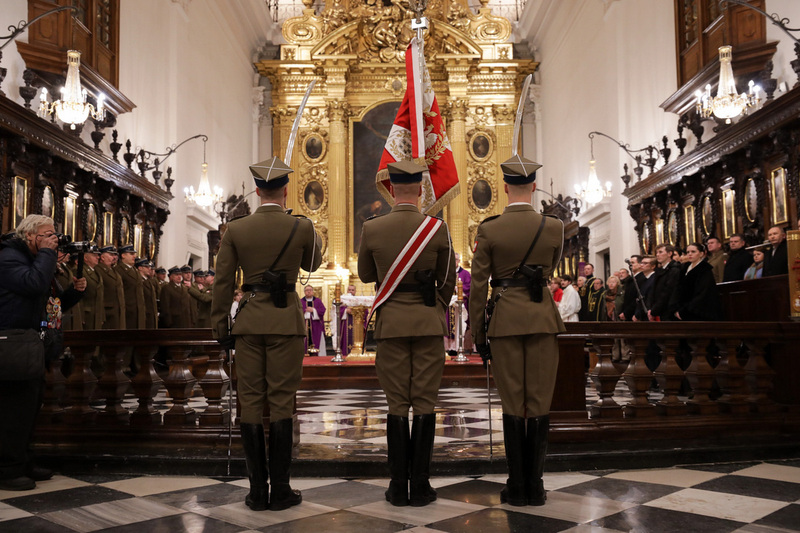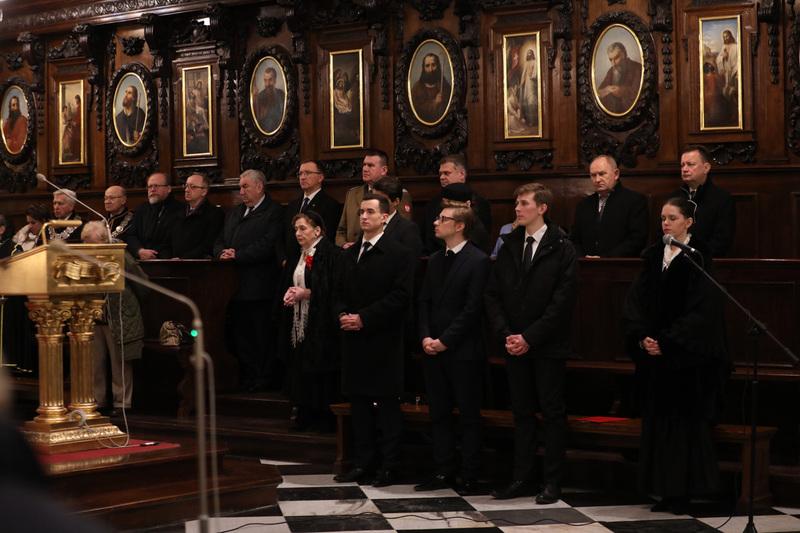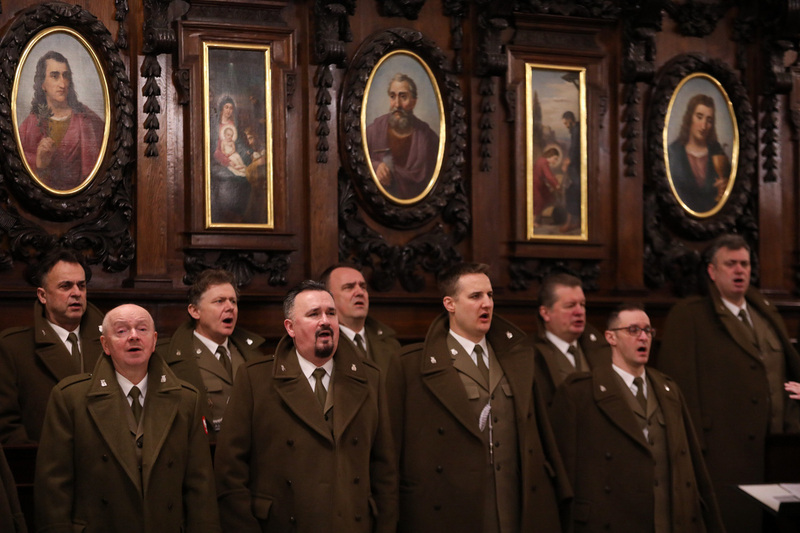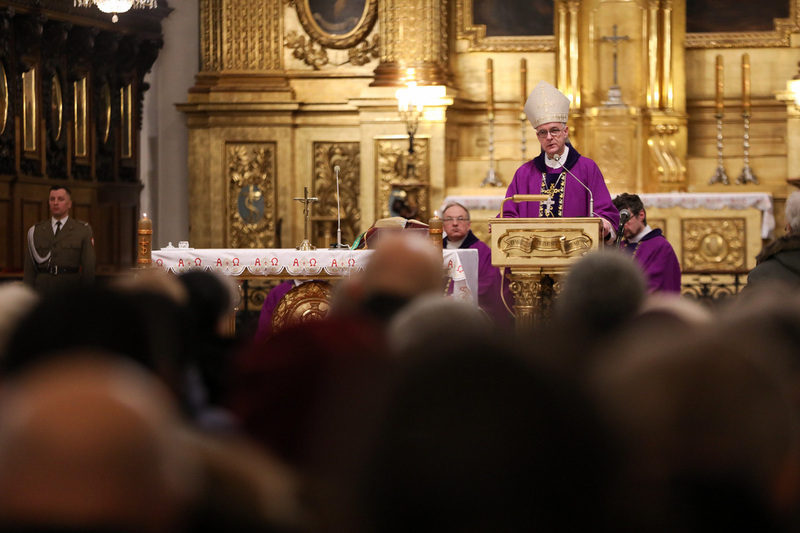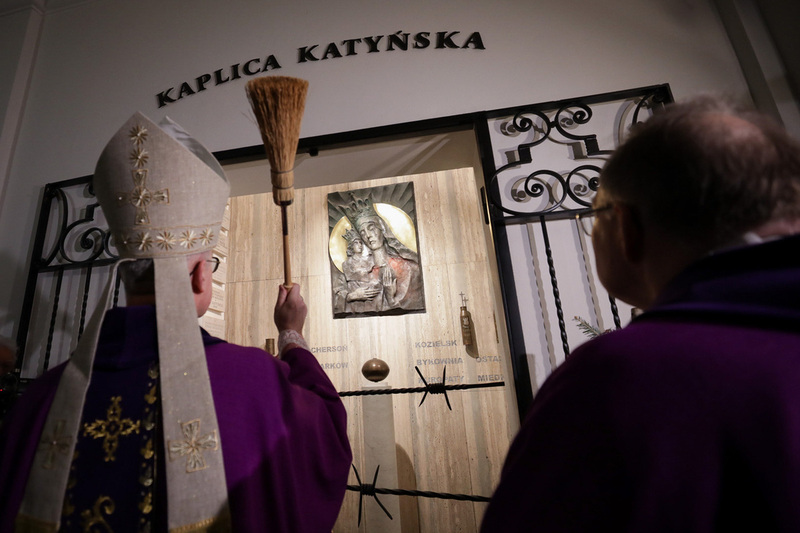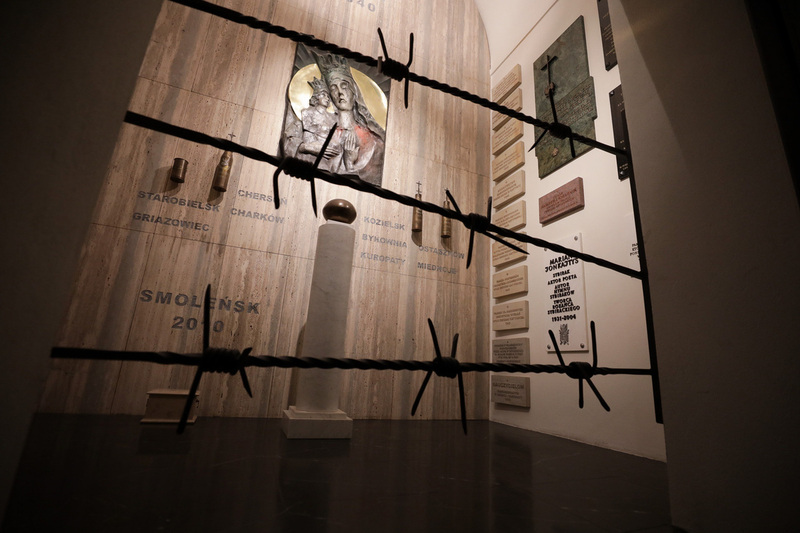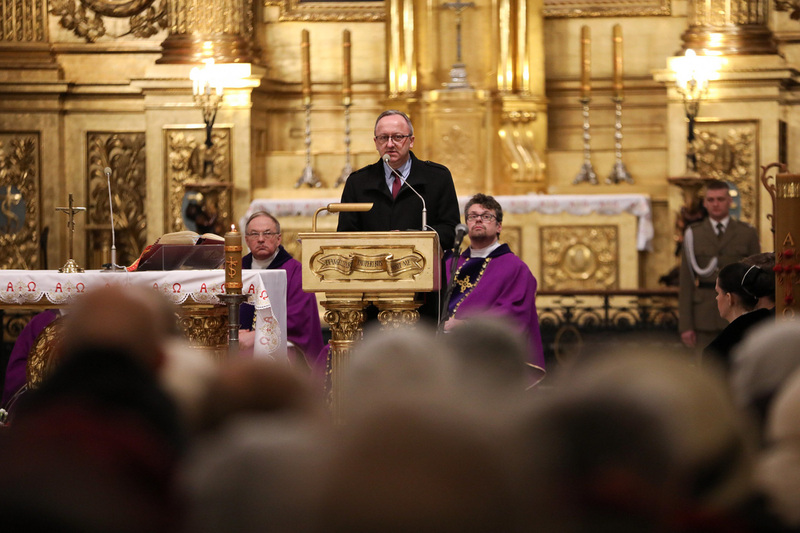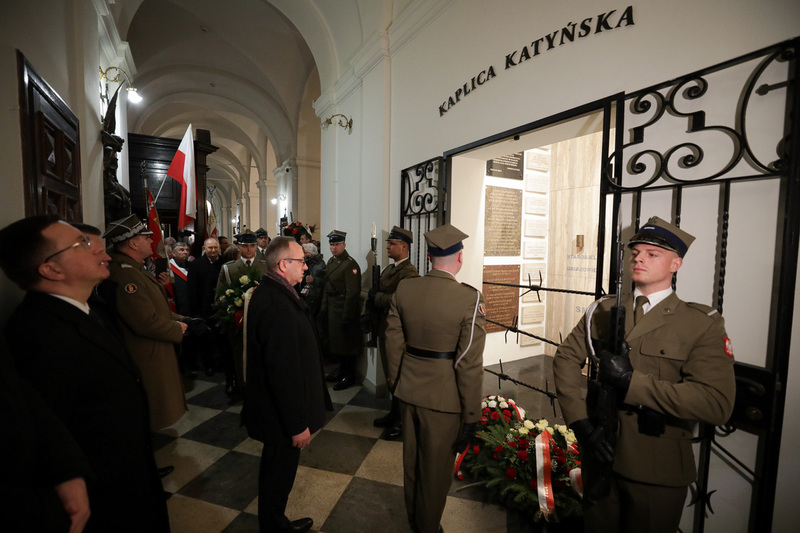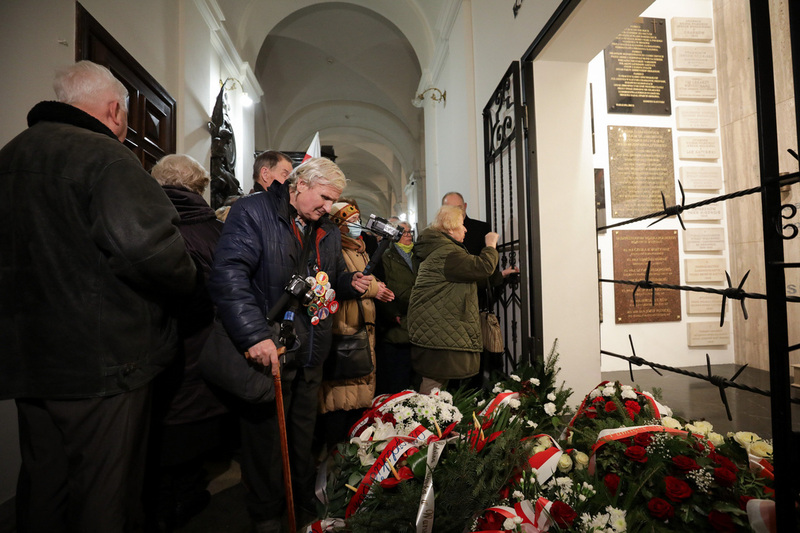On 5 March 1940, the highest Soviet authorities approved Beria’s proposal to kill Polish POWs and detainees. The approval was issued as order no. P13/144, and set in motion the preparations for the Katyń Massacre, followed by the transfer to the execution sites.
On 5 March 2023 in the Holy Cross Basilica in Warsaw, a mass was held for the intention of Polish officers murdered in Katyń, Miednoye, Kharkov and other places of massacre in the former Soviet Union. The liturgy was presided over by the Polish Army Field Bishop Wieslaw Lechowicz.
During the mass, the renovated Katyń chapel was consecrated. Its first consecration took place on 27 April 1990, carried out by the then Chancellor of the Warsaw’s Bishop Curia, Rev. Zdzislaw Król, who died on 10 April 2010, in the crash of the plane near Smolensk. Rev. Król was also a Chaplain of the Warsaw Katyń Family.
The ceremony was attended by the Deputy President of the Institute of National Remembrance Prof. Karol Polejowski. He was accompanied by Adam Siwek, Director of the Office for Commemorating the Struggle and Martyrdom.
Let us remember that until the end of the 1980s, the official communist propaganda claimed this crime had been committed by the Germans. But no lie can resist against the truth (…) The truth about Katyń survived the communist period. It was observed in the Katyń families and among their friends. But the truth about Katyń probably could not have survived without the Church. The consecrated and renovated Katyń chapel is a clear sign of the Catholic Church's role in cultivating the truth about the Russian crime, said Prof. Karol Polejowski in the commemorative speech.
The execution of almost 22,000 people: Polish POWs in Katyń, Kharkov, Kalinin (Tver) and also other Polish prisoners, soldiers and civilians, which took place in the spring of 1940 in various places of the Soviet Ukraine and Belarus was based on the decision by the Soviet authorities, that is the Political Bureau of the Communist Party.
The place of execution and burial of 4,400 Polish POWs detained in Kozelsk was a forest near the town of Smolensk. Their brothers-in-arms from Starobelsk (3,700) were taken to Kharkov and killed in the building of the local NKVD building. Their corpses were buried at the Piatichatka settlement near Kharkov. Another 6,300 prisoners from the Ostashkov camp were murdered in Kalinin and their corpses were transported and buried at the village of Mednoye near Kalinin.
Thousands of the most valuable representatives of Polish society fell victim to the Katyń massacre, which has remained as an irreparable loss. But the idea behind the crime to annihilate Polish independence aspirations failed.
